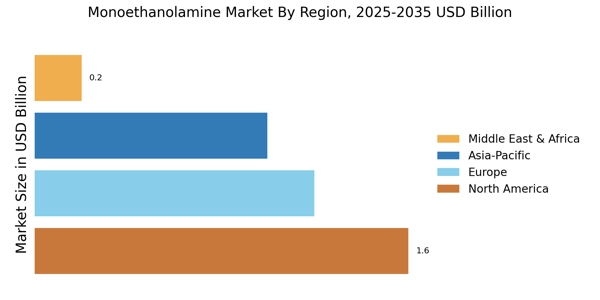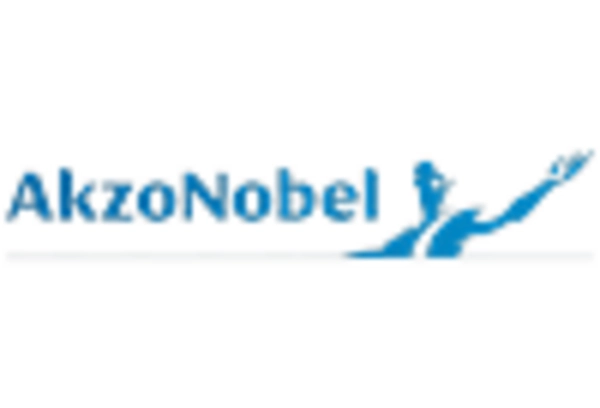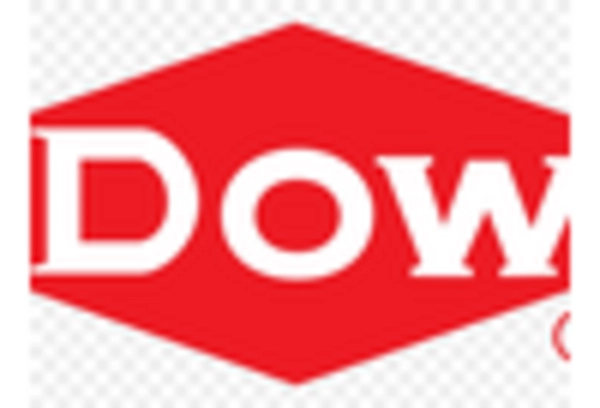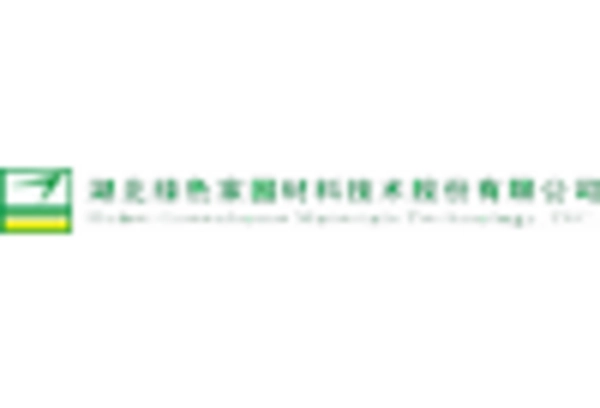Expansion in the Construction Sector
The Monoethanolamine Market is poised for growth due to the expansion of the construction sector. Monoethanolamine is utilized in the formulation of various construction materials, including adhesives, sealants, and coatings. As urbanization accelerates and infrastructure projects increase, the demand for construction materials is expected to rise. The construction industry is projected to grow at a rate of 4% annually, which may lead to a corresponding increase in the consumption of monoethanolamine. This trend suggests that the market will benefit from the ongoing developments in construction, as manufacturers seek to enhance the performance and durability of their products through the incorporation of monoethanolamine.
Rising Demand in Personal Care Products
The Monoethanolamine Market is experiencing a notable increase in demand due to its application in personal care products. As consumers become more conscious of the ingredients in their cosmetics and skincare, manufacturers are seeking effective emulsifiers and surfactants. Monoethanolamine serves as a key ingredient in formulations for shampoos, conditioners, and lotions, enhancing texture and stability. The personal care sector is projected to grow at a compound annual growth rate of approximately 5% over the next few years, indicating a robust market for monoethanolamine. This trend suggests that the industry will continue to expand, driven by the rising consumer preference for high-quality personal care products that utilize monoethanolamine for improved performance.
Increased Use in Industrial Applications
The Monoethanolamine Market is significantly influenced by its extensive use in various industrial applications. It is utilized as a chemical intermediate in the production of herbicides, pesticides, and other agrochemicals. The agricultural sector's growth, particularly in developing regions, is likely to bolster the demand for monoethanolamine. Furthermore, the market for agrochemicals is expected to reach USD 300 billion by 2026, which could lead to increased consumption of monoethanolamine as a vital component. This trend indicates a strong correlation between agricultural advancements and the growth of the monoethanolamine market, as industries seek efficient solutions for crop protection and yield enhancement.
Growing Interest in Sustainable Solutions
The Monoethanolamine Market is witnessing a shift towards sustainable solutions, driven by environmental concerns and regulatory pressures. Manufacturers are increasingly focusing on eco-friendly products, and monoethanolamine is being recognized for its biodegradable properties. This shift is particularly relevant in industries such as agriculture and personal care, where sustainability is becoming a key purchasing criterion. The market for sustainable chemicals is expected to grow significantly, potentially reaching USD 150 billion by 2027. This trend indicates that monoethanolamine could play a crucial role in meeting the demand for sustainable alternatives, thereby enhancing its market position and appeal to environmentally conscious consumers.
Technological Advancements in Production Processes
The Monoethanolamine Market is benefiting from technological advancements in production processes. Innovations in manufacturing techniques are leading to more efficient and cost-effective methods of producing monoethanolamine. These advancements not only enhance production capacity but also improve product quality, making monoethanolamine more attractive to various industries. As production costs decrease, the market is likely to see increased competition and a broader application range for monoethanolamine. The ongoing research and development efforts in chemical manufacturing suggest that the market will continue to evolve, potentially leading to new applications and increased market penetration for monoethanolamine.


















Leave a Comment